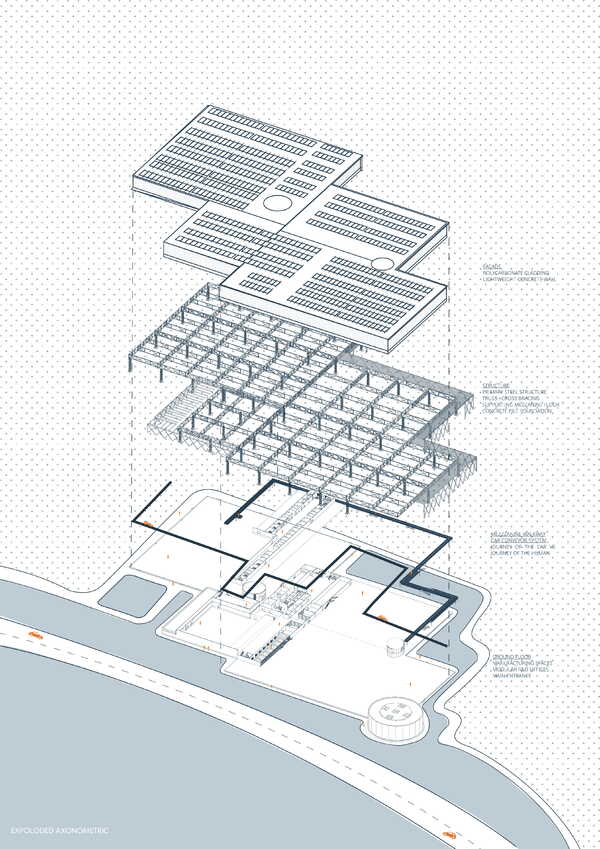The global future of mobility is shifting towards an electrical, autonomous, shared and more connected future, the UK has pledged to go carbon neutral by 2050 further accelerating the demand for electrified and automated vehicles. Therefore to better support these development goals the infrastructure of a research and design facility is necessary to provide the services and systems needed. The facility is mainly used for product development and safety testing, prototypes are developed and tested at the centre before being launched on the product market. The M58 is used as a testing site for the developed prototypes alongside a mini test track opposite the R&D centre. The facility is open to the public, engaging the local community educating them about the research and design work happening at the centre, visitors can take a tour that allows them to explore the entire facility observing car production from start to finish on a mezzanine level located above the manufacturing spaces.
The building itself takes on a modular assembly system that allows for future expansion due to the constant change in technology hence the need for the building to be adaptable in the face of constant change. Dynamism, motion and the motif of car assembly is consistent throughout the building as both humans and cars travel at different paces throughout the building. A conveyor belt carries the car from a ceiling level through formal and informal spaces breaking down the hierarchies and blurring the boundaries between manufacturing and office design spaces. The research and design office is centered between the three main manufacturing spaces (body shop, paint shop & assembly) branching out for easy access helping to achieve a more efficient workflow and a higher level of visual transparency between the different spaces. The layering of space helps engage different groups of workers encouraging collaboration between different expertise to help promote the creative culture needed in a research and design facility.


